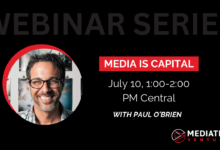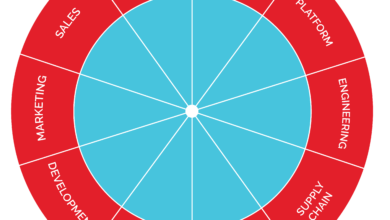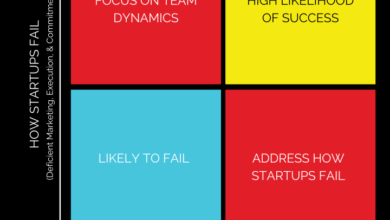A Competition Slide that Closes Capital

I was asked recently if Facebook and Google are competitors, and the question being asked, struck me with as much alarm as hearing a startup founder say they don’t have competitors.
What most frequently gives an investor pause is a slide in a pitch deck that communicates that you’re not paying attention to your market and threats looming from alternatives.
Yes, without question, Google and Facebook are competitors.
Finding Success Starts with Avoiding Failure
The provocative claim has been made, “competition is for losers,” begging a question not of whether or not that’s true but rather why it was said.
“Every firm in a competitive market is undifferentiated and sells the same homogeneous products. Since no firm has any market power, they must all sell at whatever price the market determines. If there is money to be made, new firms will enter the market, increase supply, drive prices down, and thereby eliminate the profits that attracted them in the first place. If too many firms enter the market, they’ll suffer losses, some will fold, and prices will rise back to sustainable levels. Under perfect competition, in the long run no company makes an economic profit.”
– Peter Thiel; Zero To One
Startups are an efficient and exceptional application of innovation and marketing.
Innovation is doing something distinct and new. Marketing is knowing what everyone else is doing and differentiating your experience to create value and customers.
Meaning… don’t just do what they’re doing
A pitch deck slide that neglects obvious competitors, overlooks key features, or that disregards past attempts that have failed, raises valid red flags your work as an entrepreneur.
Google and Facebook Are Competitors
They know it. How is that anyone else might not know it??
Let’s unpack these two in particular, since both are so relevant to our work in mediatech (and both help illustrate how every startup has competitors).
Too many define companies like Google and Facebook too narrowly as “Search” and “Social Media,” therefore not the same. Not competitors.
Let me let you in on an important not-so-secret: Both are data companies that monetize users.
You likely don’t pay anything to either company. Unless you’re a business paying them for services, you’re not their customer, you are their product (data).
Both are media companies
They create value through content. And you, others, and businesses, create that content.
They compete for our use, our attention, and ad dollars.
But beyond that, clearer similarities are apparent when you appreciate all they actually do:
- Do you watch more videos on YouTube or Facebook?
- Do you engage with local businesses more because of Facebook or Google Local & Maps?
- Do you manage your contacts more with Google Contacts and Gmail or Friends on Facebook?
- I presume you Message with Google Android or Chat (whatever it’s called now) and you probably message with Facebook too
- Businesses and advertisers get incredible ad performance data, competitive data, and audience data, from both.
- Both are fighting to prevent government regulation of the internet… why? Because government getting involved in markets tends to empower some and create difficulty for most… both Facebook and Google stand to lose business and neither can afford the other to have too much of an advantage.
Competitors to one another, Facebook and Google are also competitors to most of what any of us are doing in media. Thus what matters, is why we’re on this article together: how do you meaningful present, as a startup, your competition?
Creating a Great Pitch Deck Competition Slide
Start with a competitive analysis.
Hopefully we’re on the same page now appreciating that the trick to entrepreneurship, to starting a venture, that no one really ever talks about, is: Don’t fail.
To do that, every new endeavor (business, startup, project, or creative work), should start with a competitive analysis before doing much of anything else. I’ve shared a thought about how and why here but its’ really people like Kristie Whites and John Zozzaro, who you should tap and get to know because of a process they have for doing this in depth (we teach it and work through it with you in our Collective curriculum, by the way).
Use a Typical Design OR Get Creative (either way, don’t skimp on this one)
Most founders use one of the three typical designs and I want to make sure you’re familiar with before we explore each a bit:
- Magic Quadrant – famous thanks to Gartner
- Harvey Balls – too often too narrow in presentation
- Power Grid – too hard to find a good article too because Google thinks we’re talking about energy
The Magic Quadrant Competitive Slide

Well known thanks to Gartner’s studies of industries, the Magic Quadrant should look like what you see here, their study from 2018 of Content Management Systems. You can see how you plot your position in your sector along two axis and then relative to your effectiveness with those points of distinction.
Here’s the rub…. When an investor sees a Magic Quadrant, it’s likely that you are (and should be) in the lower left quadrant, no matter what you’re doing (you’re a startup). Even if not, being a small team with few resources, this raises common questions:
- Can your you capably differentiate your startup on two axes? Certainly more apply. Does your solution beat competition in those two cases?
- If not, how and why would anyone buy your product?
Magic Quadrants are wonderful visuals of a sector and a simple way to appreciate a positioning in the market; Gartner creates incredibly value reports (that you should look through related to what you’re doing), but they’re not likely ideal for startups.
A Harvey Balls Competitive Slide
Considered to be created by Harvey Poppel at Booz Allen Hamilton in the 1970s, Harvey balls were developed to summarize long columns of data.

Harvey Balls indicate the degree to which a particular feature or considerations meets a what we’re comparing. While contrasting products tends to be pretty straightforward yes/no or facts (price, weight, and features), Harvey Balls help compare information that is more qualitative, such as taste or preference, and can help communicate how you’re considered relative to competition across a greater number of dynamics.
I noted that these are often used too narrowly because what we usually see in a pitch deck where these exist, is that the founder wants to convey how they’re all full circles (or near enough) as they try to communicate how they’re better than the competition. The objective with Harvey Balls is show both what you’ve accomplished or deliver better AS WELL AS what you’ve decided not to do or need help getting done.
A Harvey Balls analysis should show a mix of complete, in progress, or not applicable in your case.
A Harvey Balls Competitive Slide
The Power Grid Competitive Analysis
The Power Grid (often also called the Smart Grid – which just further confuses people given the deal meanings with the Energy Industry) starts to show how your startup excels relative to competition in terms of strategies, models, and plans.
The visual I like to show founders when explaining it is this one.
Because, take a second look at that chart…
What most founders do is present how they’re better than anything else.
Make sure your columns cover the most known considerations (reread my point about Facebook and Google if you’re not clear with what should appear there) – if an investor knows and considers something a competitor, it needs to be represented there (with at least something similar to what they have in mind).
In each row, list key benefits (not features) of greatest consider to your target customers. Don’t list what you think matters! Don’t list only what you do better/best!! List what matters to THEM.
Think through business model benefits, pricing benefits, service benefits, distribution benefits, UX benefits, and go-to-market benefits
Now quantify them and be sure to indicate how you differentiate what you’re doing from your competitors.
A neat trick? Include Harvey Balls in your Power Grid, instead of check marks.
Get Creative with your Competition Slide
Steve Blank, years ago, noted that the Petal Diagram is perhaps ideal. Take look because it’s not common, and perhaps more challenging to distinguish yourself with, but the merits of this presentation are incredible.
“I’ve always thought of my startups as the center of the universe. So I would begin by putting my company in the center of the slide like this.”
– Steve Blank
Startups are distinct from new businesses. Yes? You’re innovating, uncovering a different business model, or converging sectors that used to be distinct. Our traditional competition slides are fantastic ways to represent known and familiar considerations but they still lack a means of communicating how you might be doing something that crosses existing markets. A Petal Diagram puts your work in focus, relative to competitors in various markets; distinguishing a bit better that what you’re doing is in fact creating something new.

Blank notes that this easily conveys the market size of these distinct segments, and more, consider how it helps communicate your customer segments by showing from where you’ll target marketing, create distinct value for users, and establish competitive advantages from others presented, convey potential partners, or even highlight potential acquirers.
A competition slide closes capital; or rather, is the study you need to do as a founder because it’s the assessment of your market that will cause you to fail.
In this case, in the case of knowing your competition, you likely want to consider investing in a capable Advisor, consultancy, or resources that help you make sure your analysis is comprehensive and valid. A lot of people, such as myself, geek out on this kind of data mining; if you reach out and ask, I’m sure you can find people who love to explore the innovations and differentiations in what you’re doing.
[/et_pb_text][/et_pb_column][/et_pb_row][/et_pb_section]








Love. This.
In the majority of the cases, today’s competitor is tomorrow’s ally. For example, (music) record labels were competitors until video games came along. That is, Label A was no longer competing with Label B for some teen’s money. They were both competing with video game makers for that same money.
I recently completed my Exec Summary and not knowing anything about how to present my competition I intuitively chose something similar to the petal approach. I liked it because like the quote mentions, it put my company at the center and showed what we do that is a combination of what others do, and what they do that we don’t want to do. Thanks for sharing!
EXACTLY